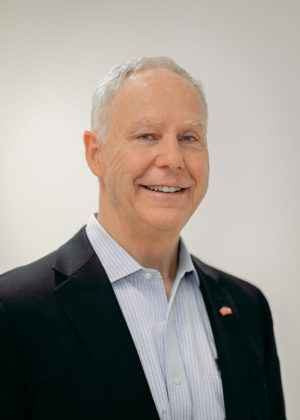Getting at root cause
In this month’s column, Center for Produce Safety conducted a produce safety Q&A with Fresh Express’ John Gurrisi. Here is how the company takes on safety, according to Gurrisi.
Q: What does fresh produce food safety look like at Fresh Express?

A: We consider food safety a company value. It is embedded in our DNA; while priorities and initiatives can change, food safety remains constant. When other departments come to me or my team to ask what we think about projects they are considering, that’s when we know food safety is continually top of mind throughout the organization.
Our approach to produce safety, “7 Steps of Prevention,” starts with Good Agricultural Practices and certifications. Step 1: Our customized GAPs ensure raw product excellence across all Fresh Express operations. It addresses and builds on 15 prevention sets. Step 2: Certification ensures our standards are being followed and an measure across-the-board excellence via multiple checkpoints, audits and ongoing surveillance. This includes “boots on the ground” inspections by our specially trained field teams.
Step 3: We utilize risk-based hazard analysis and prevention to troubleshoot and prevent food safety risks before they happen. Step 4: We share knowledge across all levels of our organization. We also work with like-minded competitors; we don’t think food safety should be a competitive advantage. Step 5: This is our traceability system, Smart Track. We are upgrading the system to utilize technology including RFID that will track in real time produce from the fields through processing.
Q: How does research factor into that program?
A: There are many unknowns in the world of fresh produce food safety ― we don’t know what we don’t know. Center for Produce Safety focuses on produce safety like no other organization, by funding cutting-edge research and providing the necessary structure for researchers to do their best work. As a member of CPS’s Technical Committee, I’m proud to be part of the whole process of overseeing these projects and lending credibility to them. Our whole company is proud to be part of CPS.
Q: Tell us about CPS research projects that are particularly relevant to processors?
A: Cyclospora is a challenge for us and our industry about which little is known. So Fresh Express has put a lot of effort and investment towards learning more. CPS has made Cyclospora a priority over the last several years, and great information is coming out of that research.
For example, researchers presenting at the 2021 and 2022 CPS Research Symposia documented limits of current testing for Cyclospora (Kniel, RFP year 2019*, Mattioli 2019*, Ortega 2019*). Currently, no single DNA-based testing method can discern Cyclospora cayetanensis from its closely related parasitic relatives. CPS researchers recommend further advanced testing to confirm C. cayetanensis presumptive positives.
That work was a big “aha!” moment for our company. We’d been doing some research testing for Cyclospora, but it is expensive, and difficult to find a certified lab that can do it; now, CPS research results have called the question whether testing is even viable at this time. Until more information or other testing methods are available, we will continue our internal research.
A current CPS project, AFECCT (Rosenthal 2021*), is assessing options for filtering out Cyclospora. Our industry can treat irrigation water to kill E. coli or Salmonella, but those sanitizers will not kill Cyclospora. So we’re left with working to prevent it ― which can be much more challenging ― or at filtering the water. This project is assessing whether common filters ― sand, zero-valent iron, or a combination of the two ― can filter out the Cyclospora oocysts.
A CPS project starting in 2023 that also jumps out at me is looking at whether treating produce with bacteriophages can reduce the risk of Listeria monocytogenes without degrading product quality (Truchado 2022*). I am looking forward to seeing those results.
If we can get at the root cause, we can develop mitigations. That, in turn, will help ensure and increase the level of produce safety for all consumers ― including us and our families. Consumers should have the confidence to eat romaine without worrying about where it was grown. This is another example of the research CPS is conducting at the growing level, working alongside regulatory bodies and private industry. Center for Produce Safety helps us find answers to countless critical questions.
* To learn more about these and other CPS research projects, visit www.centerforproducesafety.org/funded-research-projects.php.
Top photo: Mia Mattioli’s team looked for Cyclospora cayetanensis in water sources in Georgia growing regions, complementing similar testing projects around the U.S. Photo: Mia Mattioli










